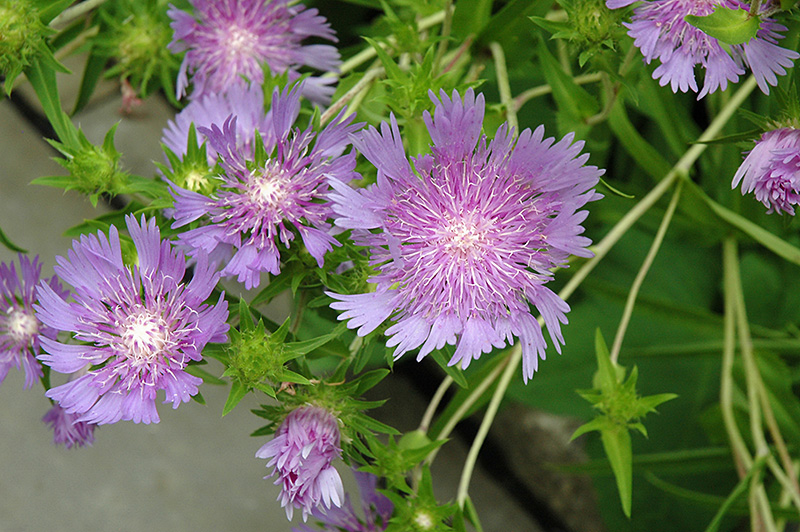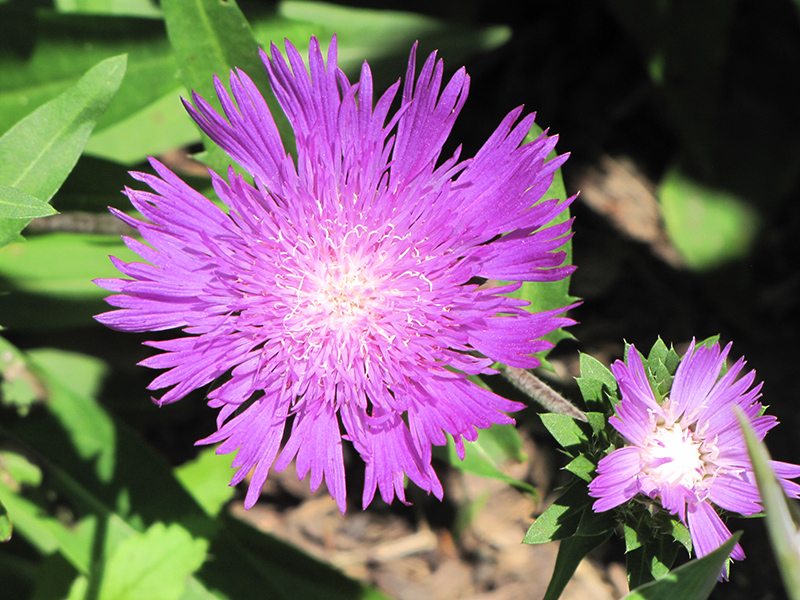Digging deeperPlant Library
Height: 14 inches
Spacing: 10 inches
Sunlight:
![]()
Hardiness Zone: 5
Other Names: Cornflower Aster
Description:
A native perennial, great for small gardens; the fragrant flowers range in color from blue, lavender, pink, white, or yellow; attracts butterflies and hummingbirds to your garden; tolerates summer heat well; water daily
Ornamental Features
Stoke's Aster has masses of beautiful fragrant double lavender daisy flowers with pink overtones and white anthers held atop the stems from mid summer to early fall, which emerge from distinctive creamy white flower buds, and which are most effective when planted in groupings. The flowers are excellent for cutting. Its narrow leaves remain green in color throughout the year.
Landscape Attributes
Stoke's Aster is a dense herbaceous evergreen perennial with a mounded form. Its relatively fine texture sets it apart from other garden plants with less refined foliage.
This is a relatively low maintenance plant, and is best cleaned up in early spring before it resumes active growth for the season. It is a good choice for attracting butterflies and hummingbirds to your yard. It has no significant negative characteristics.
Stoke's Aster is recommended for the following landscape applications;
- Mass Planting
- General Garden Use
Planting & Growing
Stoke's Aster will grow to be about 12 inches tall at maturity, with a spread of 12 inches. When grown in masses or used as a bedding plant, individual plants should be spaced approximately 10 inches apart. Its foliage tends to remain dense right to the ground, not requiring facer plants in front. It grows at a medium rate, and under ideal conditions can be expected to live for approximately 8 years. As an evegreen perennial, this plant will typically keep its form and foliage year-round.
This plant should only be grown in full sunlight. It does best in average to evenly moist conditions, but will not tolerate standing water. It is not particular as to soil type or pH. It is somewhat tolerant of urban pollution. Consider applying a thick mulch around the root zone in winter to protect it in exposed locations or colder microclimates. This species is native to parts of North America. It can be propagated by division.
A NetPS Plant Finder tool
This Plant Library is for informational purposes only. We may or may not carry the items listed. During many times of the year, we may carry many more plants in our store than are listed in the Plant Library. Please contact us directly at 303-690-4722 or visit our store for current availability and for assistance.

